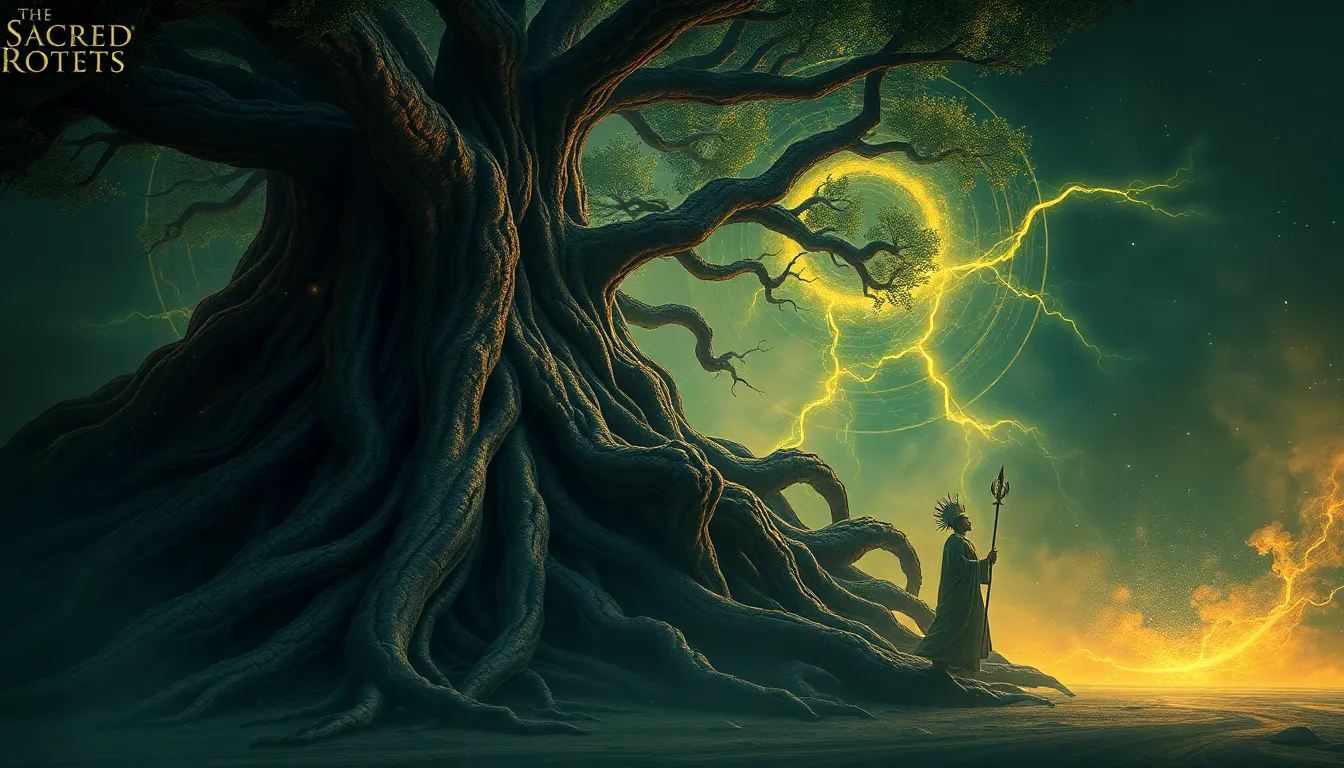The Myths That Predict the Apocalypse: A Comprehensive Guide
I. Introduction
The term “apocalypse” often evokes images of cataclysmic events, end-of-the-world scenarios, and profound change. In a broader sense, it signifies a revelation or an unveiling of truth, often tied to the fate of humanity. Culturally, apocalyptic narratives have served various functions, including moral cautionary tales, reflections on societal fears, and frameworks for understanding the human condition.
Across the globe, cultures have developed their own unique apocalyptic myths, each colored by their historical contexts, values, and collective experiences. This article aims to explore these diverse beliefs, their origins, and their implications for society today.
II. Historical Context of Apocalyptic Myths
Apocalyptic beliefs can be traced back to ancient civilizations, where they often arose from a combination of natural phenomena, sociopolitical upheaval, and religious teachings.
A. Origins of apocalyptic beliefs in ancient civilizations
Many early cultures, such as the Sumerians and Egyptians, had creation myths that included elements of destruction and rebirth. These narratives often reflected the cyclical nature of life and the human experience.
B. Significant historical events that shaped these myths
Events such as natural disasters, plagues, and wars have historically influenced apocalyptic thinking. For example, the Black Death in the 14th century led many to believe it was a sign of divine judgment.
C. The role of religion and prophecy in apocalyptic narratives
Religious texts have often provided a framework for apocalyptic visions. Prophecies, such as those found in the Bible and other sacred writings, have shaped the way communities interpret signs of the end times.
III. Major Apocalyptic Myths Around the World
A. The Christian Apocalypse: Revelations and the End Times
The Book of Revelation in the New Testament outlines a series of events culminating in the final judgment. Central figures like the Antichrist and the concept of a new heaven and earth have captivated believers for centuries.
B. Hindu Cosmology: Cycles of Creation and Destruction
In Hinduism, time is viewed as cyclical, consisting of four Yugas (ages). The current age, Kali Yuga, is characterized by moral decline, and its end is seen as a time for renewal and the return of righteousness.
C. Norse Mythology: Ragnarok and the Twilight of the Gods
Ragnarok is a series of events in Norse mythology predicted to culminate in a great battle, the death of many gods, and the submersion of the world in water, followed by its eventual rebirth.
D. Native American Prophecies: The Great Purification
Many Native American cultures possess prophecies that speak of a time of great upheaval that will lead to a purification of the earth and the emergence of a new, harmonious society.
IV. Common Themes in Apocalyptic Myths
A. The concept of a cataclysmic event
Most apocalyptic myths share a belief in a significant, often violent event that marks the end of the current world order.
B. The idea of judgment and salvation
Many narratives include themes of judgment, where individuals or societies face consequences for their actions, often leading to the hope of salvation for the righteous.
C. The symbolism of rebirth and renewal
Apocalyptic stories frequently conclude with a vision of renewal, suggesting that after destruction comes the possibility of a better existence.
V. Psychological and Sociological Perspectives
A. Why humans are drawn to apocalyptic narratives
Humans have an inherent fascination with the end of the world, often driven by a desire to understand existential fears and the unknown.
B. The impact of fear and uncertainty on belief systems
Periods of crisis often amplify apocalyptic thinking, as individuals seek explanations for their fears and uncertainties through these narratives.
C. Apocalyptic myths in contemporary society and their relevance
In today’s world, apocalyptic myths continue to resonate, reflecting ongoing societal anxieties about war, climate change, and technological advancements.
VI. Modern Interpretations and Adaptations
A. Apocalyptic themes in literature and film
Contemporary literature and film often draw on apocalyptic themes, exploring the human condition in times of crisis, as seen in works like “The Road” and films like “Mad Max.”
B. The influence of technology and science on modern myths
Scientific advancements have shifted some apocalyptic narratives from religious to secular, focusing on potential disasters such as nuclear war or climate change.
C. How social media shapes perceptions of apocalypse
Social media plays a crucial role in spreading apocalyptic narratives, amplifying fears, and creating communities around these beliefs.
VII. Case Studies of Failed Apocalypse Predictions
A. Notable predictions that did not come to pass
Various predictions, such as those made by Harold Camping in 2011, have failed to materialize, leading to public skepticism about apocalyptic prophecies.
B. Analysis of the societal impact of these predictions
Failed predictions often leave followers disillusioned, yet they can also lead to renewed interest in understanding the underlying beliefs.
C. Lessons learned from failed apocalyptic forecasts
These failures highlight the importance of critical thinking and the need to question the sources of our beliefs.
VIII. The Role of Environmental Concerns in Apocalyptic Thinking
A. Climate change and its apocalyptic narratives
Climate change has become a central theme in modern apocalyptic thought, with many viewing it as a potential harbinger of societal collapse.
B. The intersection of environmentalism and mythology
Environmental movements often utilize apocalyptic narratives to raise awareness and prompt action against ecological destruction.
C. Future implications of environmental apocalyptic myths
The continued prominence of these narratives may influence policy decisions and cultural attitudes toward environmental stewardship.
IX. Preparing for the Apocalypse: Cultural and Practical Responses
A. Survivalism and preppers in modern society
Survivalism has gained popularity, with individuals and communities preparing for potential disasters by stockpiling resources and developing skills.
B. Spiritual and community responses to apocalyptic fears
Many turn to spiritual practices and community building as a way to cope with fears of an uncertain future, seeking solidarity and support.
C. How different cultures prepare for perceived end times
Cultural responses to apocalyptic fears vary, from creating disaster preparedness plans to engaging in rituals designed to protect and purify.
X. Conclusion
Apocalyptic myths serve as a reflection of humanity’s deepest fears and hopes. They offer insights into cultural values and the ways societies cope with existential threats. As we navigate an increasingly complex world, these narratives continue to evolve, reminding us of the enduring nature of belief and the human quest for understanding.
Ultimately, apocalyptic myths shape our perceptions of existence and the future, guiding us in our response to both real and imagined threats. They encourage us to reflect on our actions and their consequences, fostering a deeper understanding of our place within the universe.




